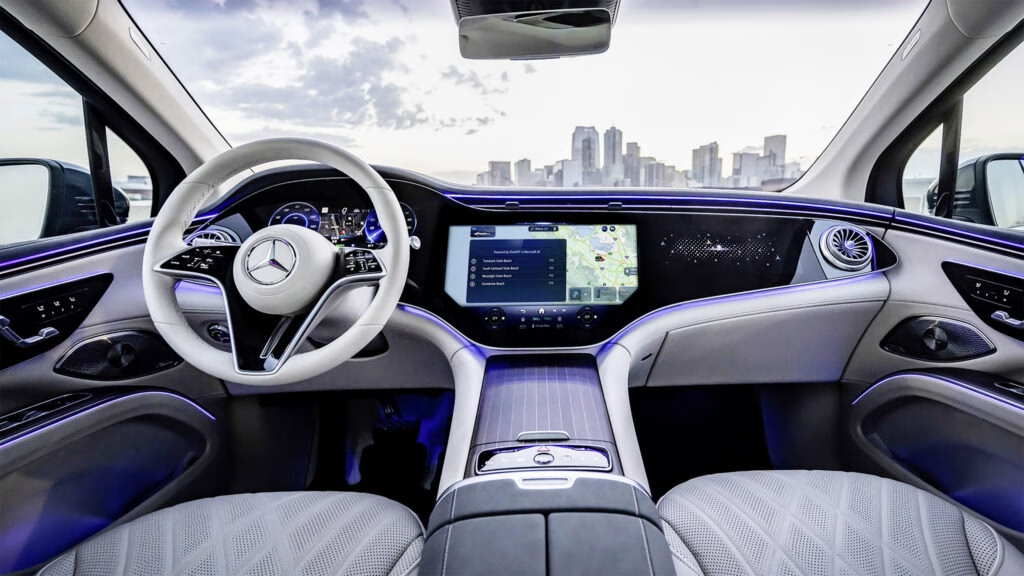Why Are Drivers So Enthusiastic About Smart Climate Control?
Let’s be honest—nobody likes fiddling with a touchscreen while driving, especially when all you want is a little more heat or a blast of cool air. That’s exactly why smart climate control systems are winning over so many car owners. According to the latest J.D. Power U.S. Tech Experience Index (TXI) Study, vehicles equipped with AI-powered climate controls are seeing 6.3 fewer reported problems per 100 vehicles. That’s not just a blip; it’s a meaningful shift in day-to-day comfort and satisfaction.
What’s really interesting is how these systems sidestep the growing trend of burying climate settings in touchscreen menus. Instead, they learn your preferences and automatically adjust temperature, airflow, and even seat heating or cooling. The result? Pure magic. You get a more comfortable ride without the distraction, and owners are noticing—these features are now boosting both quality scores and overall satisfaction across the board.
Which In-Car AI Features Are Actually Making Life Easier?
Beyond climate control, several other AI-driven features are starting to shine. Blind spot cameras, for instance, have become a must-have for many drivers. J.D. Power’s data shows that 93 percent of owners use them regularly, and 74 percent want blind spot cameras in their next vehicle. That’s a huge endorsement. Not only do these systems make lane changes safer, but cars equipped with them are selling faster than those without.
Another area getting buzz is in-car payment systems. Sixty-two percent of owners say they’re interested in paying for fuel, tolls, parking, or EV charging right from the dashboard. While early versions were clunky and limited, the next generation could be a game-changer—if automakers focus on making transactions quick and seamless. Imagine rolling up to a charging station, tapping once, and you’re good to go. That’s the kind of convenience people want.
Where Do AI Features Still Fall Short?
Of course, not every new tech hits the mark. Car wash modes, for example, sound handy in theory—they prep your vehicle for an automatic wash with a single command. But in practice, 38 percent of owners say they’re confused about how to use them, often because the feature is buried deep in the infotainment system. If you’ve ever spent five minutes poking around menus just to fold in your mirrors, you know the frustration.
Biometric authentication and driver recognition tech are also stumbling. The study found biometric systems average more than 29 issues per 100 vehicles. Touchless controls and direct driver monitoring aren’t faring much better, each with over 19 problems per 100 vehicles. The takeaway? If a feature adds more hassle than help, drivers are quick to notice—and complain.
Which Brands Are Leading the Pack in Automotive Innovation?
When it comes to tech leadership, Genesis is setting the pace. For the fifth year running, Genesis took top honors for innovation, with Cadillac and Lincoln trailing close behind. In the mass-market segment, Hyundai leads, followed by Kia and—somewhat surprisingly—Mitsubishi. That’s a big leap for a brand not typically known for cutting-edge tech.
Tesla and Rivian posted impressive scores (873 and 730, respectively), but weren’t included in the official rankings due to study criteria. Still, their high marks show that even newcomers can shake up the established order when it comes to tech-forward thinking.
On the flip side, some brands are struggling. Stellantis marques like Jeep, Ram, and Chrysler landed at the bottom, while Jaguar had the lowest score among premium brands. It’s a reminder that innovation isn’t just about adding more features—it’s about making sure they work, and work well.
How Can Automakers Turn AI Frustrations Into Wins?
The J.D. Power study makes one thing clear: drivers love technology that genuinely makes their lives easier. Kathleen Rizk, senior director of user experience benchmarking at J.D. Power, summed it up well—smart tech should anticipate needs and reduce the cognitive workload, not add to it. Features that are intuitive, reliable, and clearly explained are the ones that stick.
Automakers looking to improve should focus on simplicity and integration. That means fewer buried menus, more natural controls, and better onboarding for new features. Real-world usability testing—where engineers watch actual drivers interact with these systems—could go a long way toward ironing out the kinks.
What’s the Real Impact of AI on the Driving Experience?
At the end of the day, the best AI features are the ones you barely notice—they just work. Blind spot cameras, smart climate, and seamless in-car payments are all examples of tech that fades into the background, quietly making driving safer and more enjoyable. When systems are clunky or confusing, though, they become a source of frustration rather than delight.
The big takeaway? Automotive AI isn’t about perfection—it’s about smarter adjustments. Start with one change this week, and you’ll likely spot the difference by month’s end.

